Key takeaways:
- Plastic waste poses a severe threat to marine life, with 8 million tons entering oceans annually and only 9% of plastic being recycled.
- Ocean conservation is vital for both ecological balance and human well-being, as oceans play a significant role in climate regulation and biodiversity.
- Small personal changes and community engagement can lead to a greater impact on reducing plastic waste and fostering sustainable habits.
- Sharing knowledge and organizing awareness events can cultivate a culture of responsibility towards plastic pollution and inspire collective action.
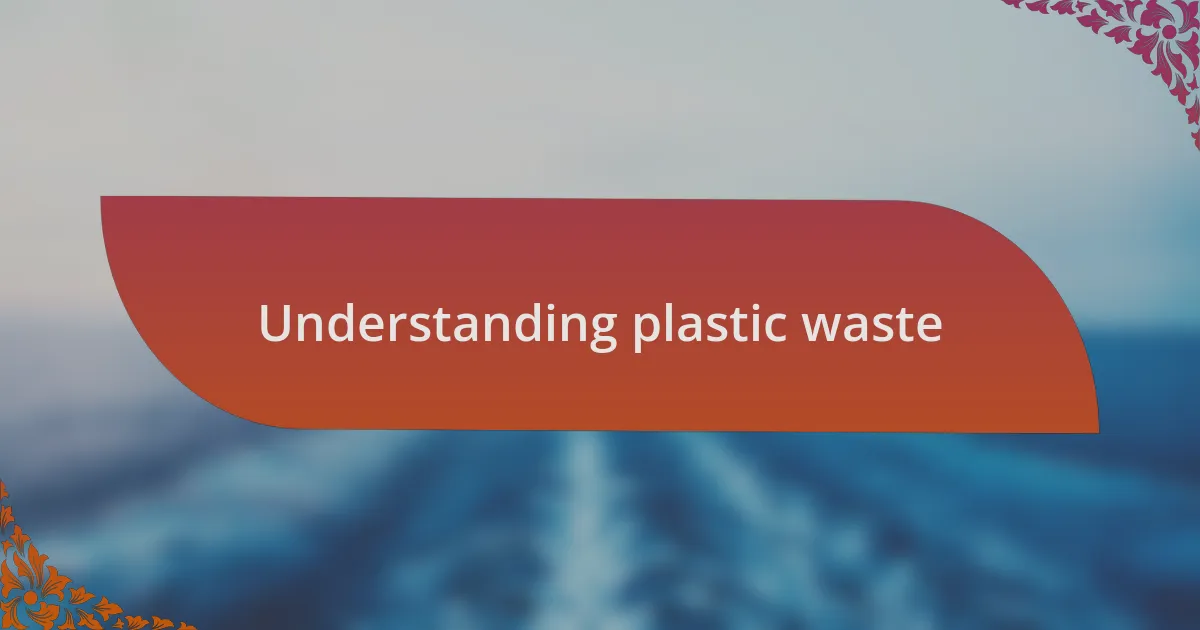
Understanding plastic waste
Plastic waste is a significant issue that continues to escalate, affecting our oceans and wildlife. I remember a moment on a beach cleanup when I stumbled across a tiny plastic bottle washed ashore. It made me wonder, how did this bottle travel so far, and what impact does it have on marine life? The journey of plastic often starts with a single-use item, which can persist in the environment for hundreds of years.
When we think about plastic waste, it’s crucial to recognize that most plastics are not biodegradable. I’ve often felt disheartened when I see the ocean filled with debris, knowing that many creatures mistake plastic for food. Imagine a sea turtle trying to swallow a plastic bag, thinking it’s a jellyfish. It’s heartbreaking, and it drives home the reality that our choices today directly impact ocean health tomorrow.
Understanding the lifecycle of plastic—from production to disposal—helps us grasp its pervasive presence. I’ve shared with friends how only 9% of plastic is ever recycled; the majority ends up in landfills or the ocean. This statistic hits hard. Engaging in conversations about why we should shift towards alternative materials can ignite a passion for change, pushing us to take collective action against this overwhelming problem.
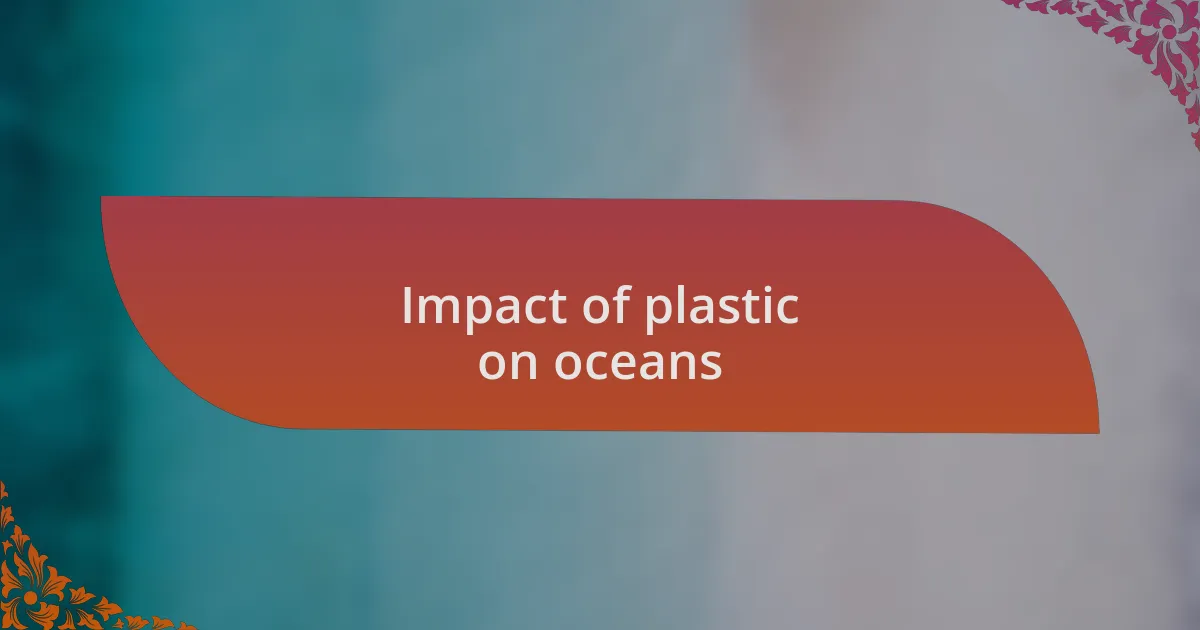
Impact of plastic on oceans
Plastic has a profound impact on our oceans, creating a hazardous environment for marine life. I vividly remember watching a documentary where they revealed that about 8 million tons of plastic enter the oceans each year. That number left me stunned and pondering how that much waste can disrupt delicate ecosystems.
When I go for walks along coastal areas, I often come across evidence of this pollution, like fishing nets entangled in rock formations. It’s alarming to think that these nets, often referred to as “ghost gear,” can continue to trap and kill marine animals long after they’ve been discarded. It makes me question how many sea creatures have suffered silently because of our gradual overlooking of this crisis.
The hidden truth about plastic’s impact is even more disturbing. Microplastics, which result from the breakdown of larger plastic items, infiltrate the very food chain we rely on. I recall a moment when I learned that fish are found ingesting these tiny particles, which then leads to them entering our dinner plates. How can we ignore the ripple effect of our plastic addiction when it can reach us, literally, at the dinner table?
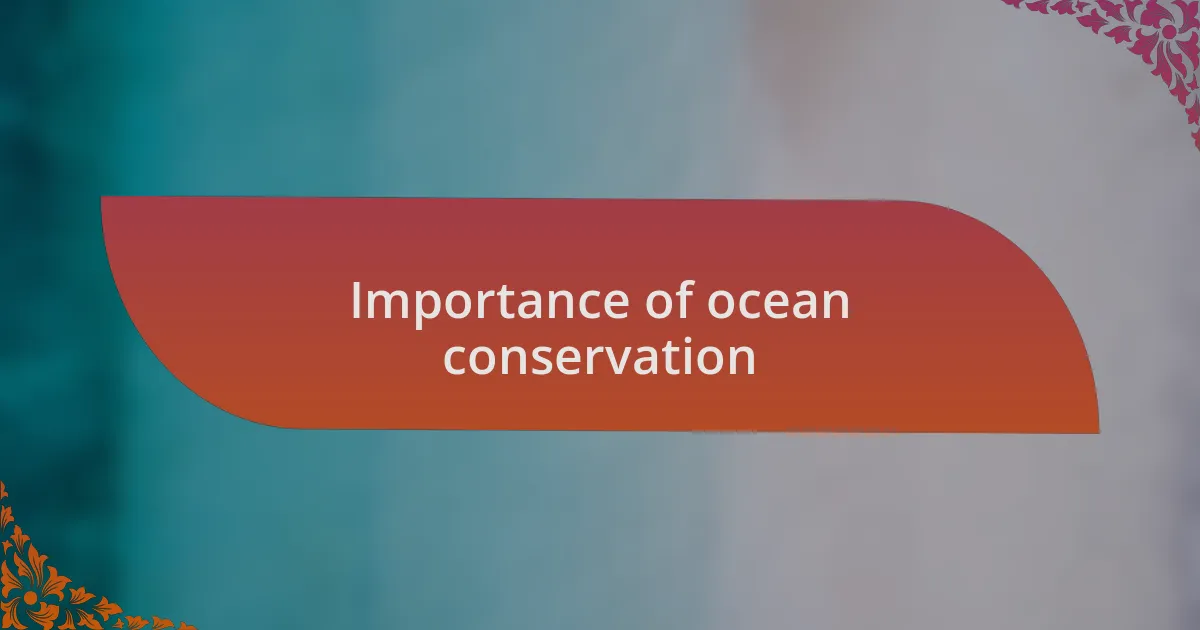
Importance of ocean conservation
Ocean conservation is crucial for maintaining the health of our planet. I can still recall the awe I felt the first time I swam in a vibrant coral reef teeming with life. The sheer diversity of species was breathtaking, and it hit me hard that preserving these ecosystems isn’t just an environmental issue but one that affects our own well-being and enjoyment of nature. Just imagine a world without that color and life; it’s heartbreaking to think about.
When I think about the importance of conservation, I’m reminded of my visit to a marine protected area. It was remarkable to see how nature can rebound when given a chance. Fish were abundant, and the waters were clear, showing how effective protection measures can create thriving habitats. Doesn’t it make you wonder how many thriving marine areas could exist if we committed to protecting them?
At the same time, the ocean regulates our climate, playing a vital role in carbon sequestration. I remember attending a seminar where a speaker highlighted that the ocean absorbs about 25% of carbon dioxide emissions. This detail resonated with me because it highlighted our connectedness to the ocean. How can we disregard something so essential to our survival? By caring for our oceans, we’re not just protecting marine life; we’re securing a healthier future for ourselves too.
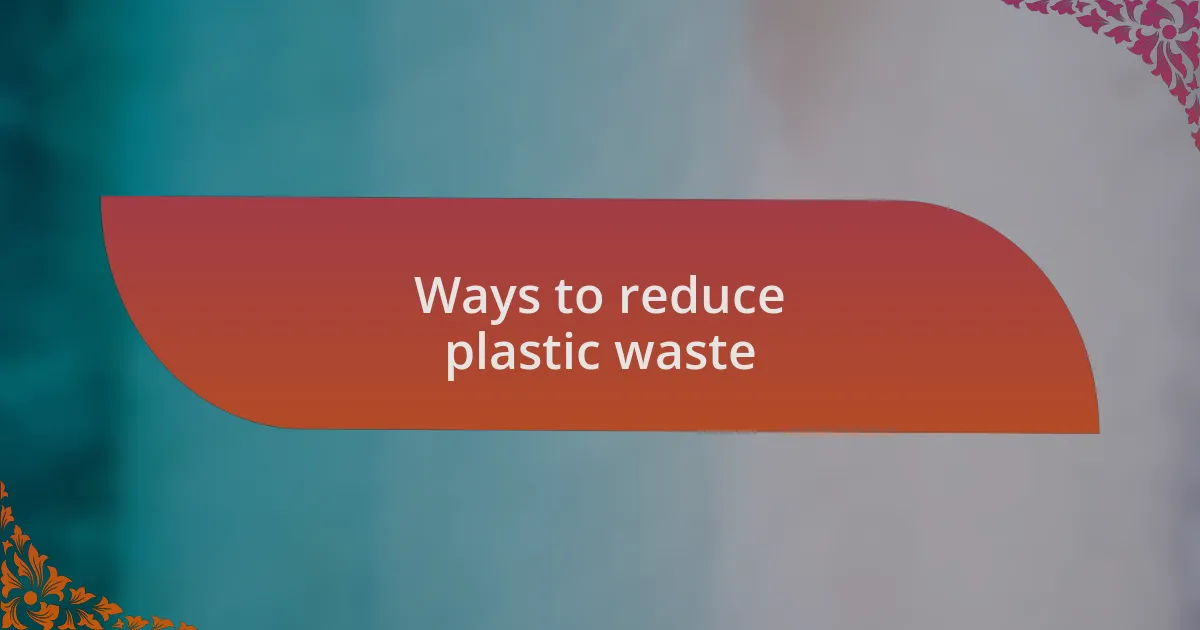
Ways to reduce plastic waste
When I started making small changes in my daily routine, I realized how easily we can reduce plastic waste. For instance, I adopted the habit of bringing reusable bags to the grocery store and avoided those flimsy plastic ones. It feels empowering to know that even simple actions can accumulate to make a significant impact on the environment.
One tactic that has worked wonders for me is opting for products with minimal or no packaging. During a recent trip to my favorite farmers’ market, I was delighted to find fresh produce sold without plastic wrapping. Not only did I leave with beautiful fruits and vegetables, but I also felt a sense of satisfaction knowing that I was supporting local farmers while reducing my plastic footprint. Have you ever thought about how many layers of packaging we encounter in a single shopping trip?
Another key aspect I find effective is spreading awareness amongst friends and family. I’ve often hosted small gatherings where we share tips on living a low-plastic lifestyle, like DIY household products or crafty ways to reuse containers. It’s amazing to see others become inspired and excited about making changes as well; it’s a reminder that we’re all in this together. How rewarding is it to watch someone realize that their choices matter?
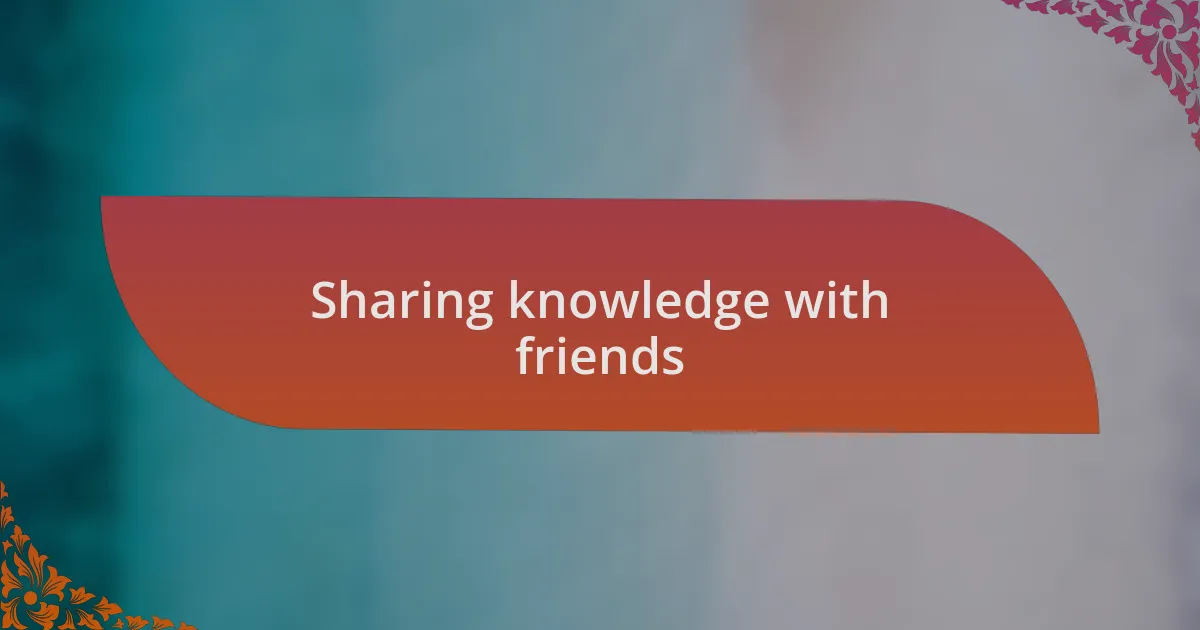
Sharing knowledge with friends
When sharing knowledge about plastic waste with friends, I often recall a lively discussion I had over coffee with a close friend. She was shocked to learn that plastic can take hundreds of years to decompose. It struck me how important it is to present these facts in relatable terms, as it often makes my friends more aware of their own habits. Have you ever seen someone’s face light up with understanding?
One evening, I decided to incorporate a movie night featuring documentaries about ocean pollution. It sparked incredible conversations among my group about how each person’s choices impact our oceans. I was pleasantly surprised when they began suggesting practical alternatives or local initiatives, which made me realize the contagious power of knowledge. Isn’t it empowering to witness how one conversation can lead to a ripple effect of change?
I find that sharing personal experiences can be the most impactful tool. For example, when I shared my struggles with remembering to carry reusable items, it opened up a candid dialogue about our daily routines. I encouraged my friends to share their own challenges, fostering a supportive atmosphere that emphasized collective progress. Isn’t it exciting to think how many small changes can be encouraged just by opening up about our journeys?
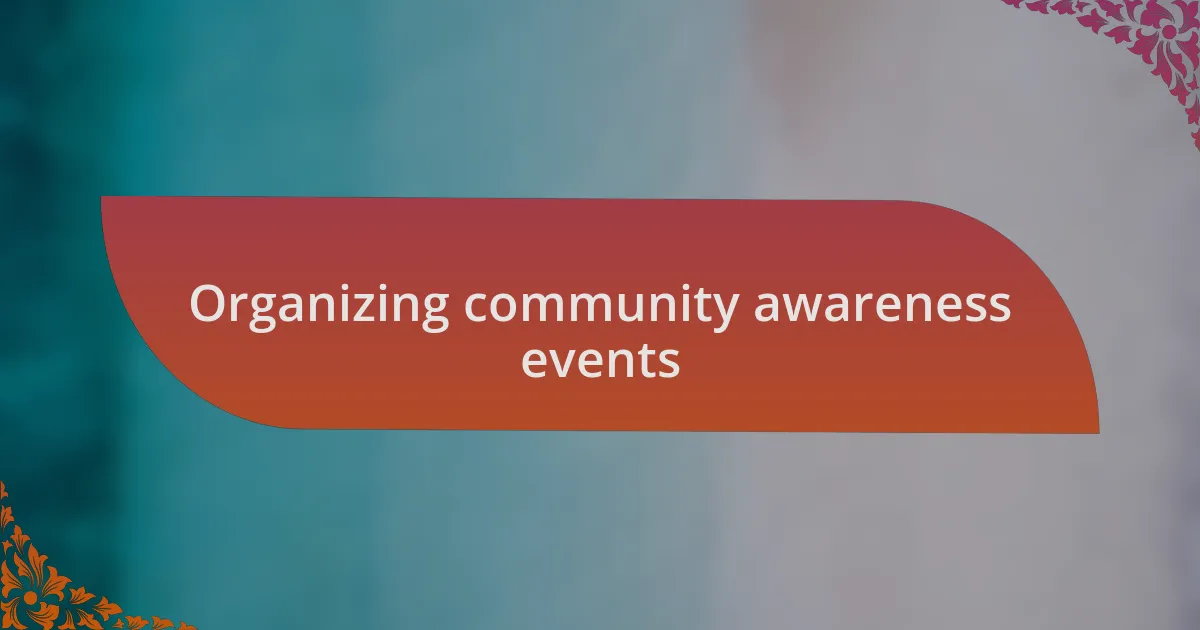
Organizing community awareness events
Organizing community awareness events has been a game-changer for me. Last summer, I teamed up with local environmental groups to host a beach cleanup day. I was amazed by how many neighbors showed up, driven by a shared desire to protect our shores. Watching families work together made me realize that community engagement often starts with a simple invitation. Have you ever noticed how a little initiative can bring people together?
During one of these events, I decided to incorporate a “Plastic Pollution 101” workshop, where I presented eye-opening statistics and engaging activities. One participant, an elementary school teacher, shared how she now plans to incorporate what she learned into her classroom. It reinforced my belief that even one event can inspire broader change. How gratifying is it to think that our small gatherings can ripple out into our community in such meaningful ways?
As we wrapped up our initiatives, I encouraged attendees to share their own ideas for future events. I was genuinely moved by the enthusiasm. People were eager to brainstorm ways to continue the momentum beyond that day. It’s incredible to realize how a shared passion for our oceans can ignite creativity and foster collaboration. Don’t you think this kind of community spirit is essential for lasting change?
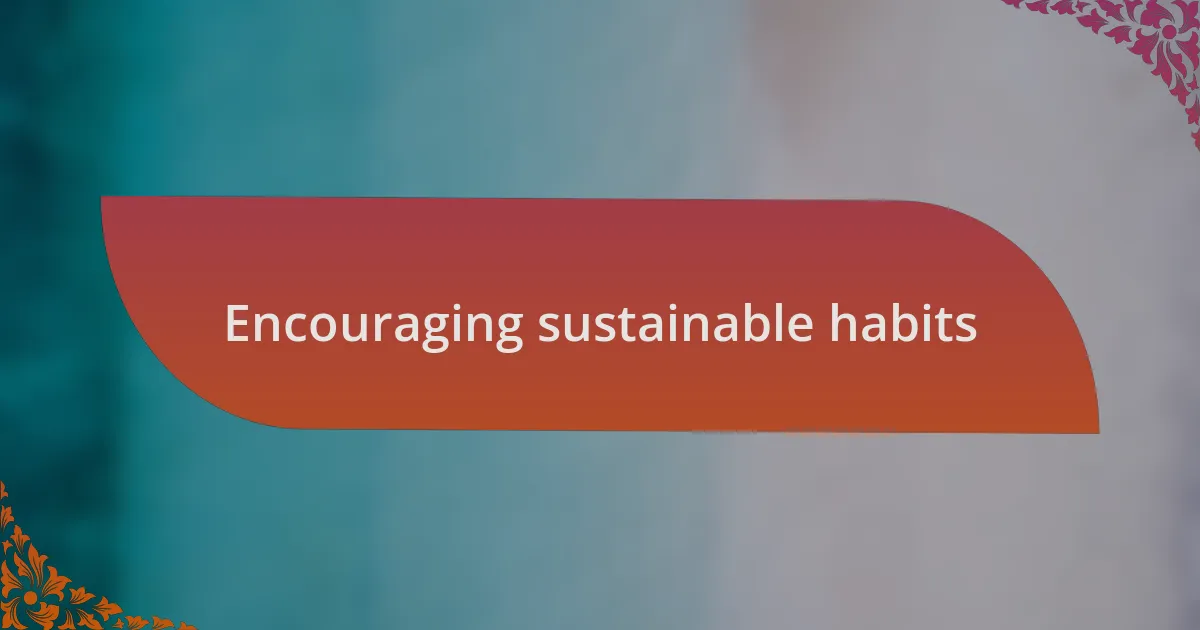
Encouraging sustainable habits
Encouraging sustainable habits starts at home. I remember when I decided to swap out single-use plastic for reusable options in my daily life. It wasn’t just about my own convenience; I found that every time I carried my reusable bags or drank from my stainless-steel bottle, people would often ask questions. Have you seen how a simple action can spark curiosity and dialogue among friends?
One day, while cooking with a friend, I noticed how much plastic we were tossing away from our ingredients. I took the moment to discuss the benefits of buying in bulk or choosing products with minimal packaging. That conversation led to us visiting a local bulk store together the following weekend. Isn’t it fascinating how learning together can create a shared commitment towards reducing plastic waste?
I often challenge my friends to join me on “Plastic-Free Days.” It’s a fun way to raise awareness and test our creativity in avoiding plastic. The laughter we’ve shared over our creative solutions has turned what could have been a chore into a highlight of our month. Don’t you think that turning sustainability into a game can transform our habits and strengthen our friendships?